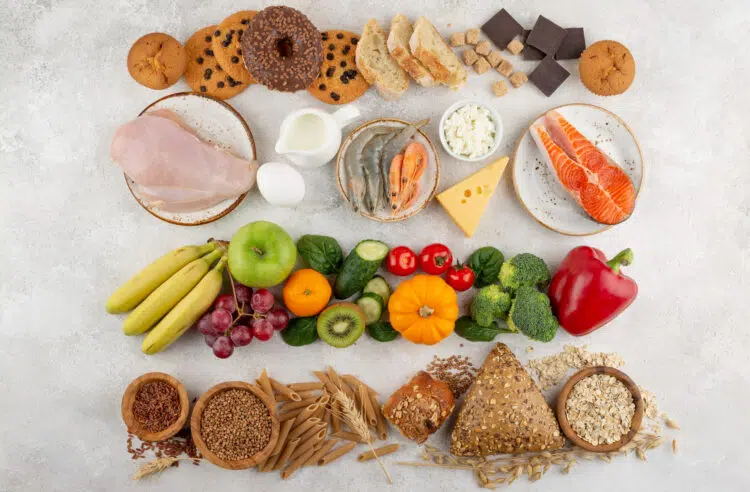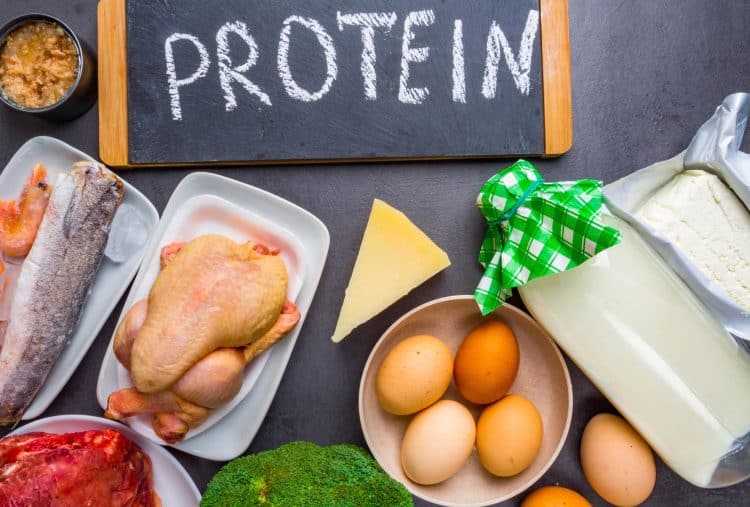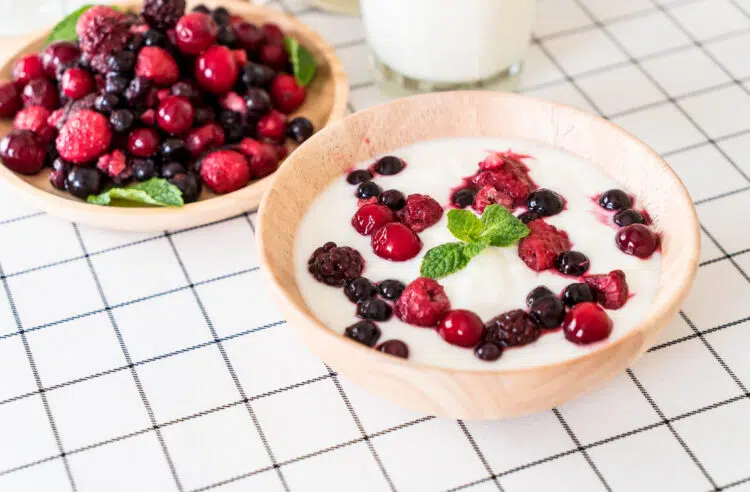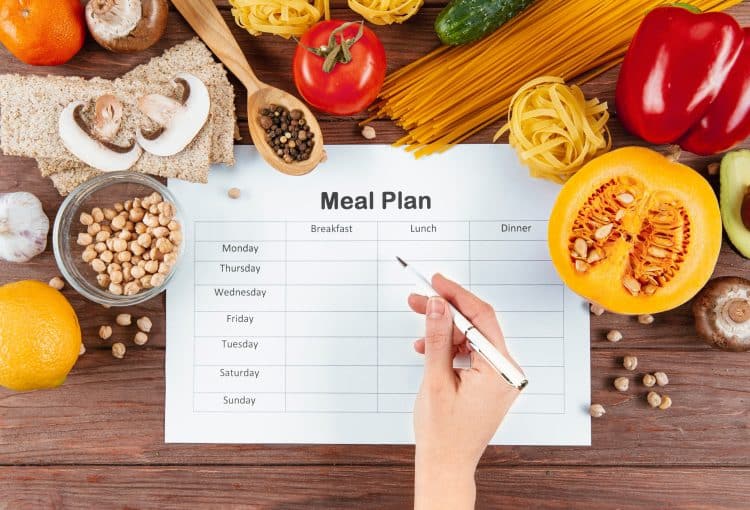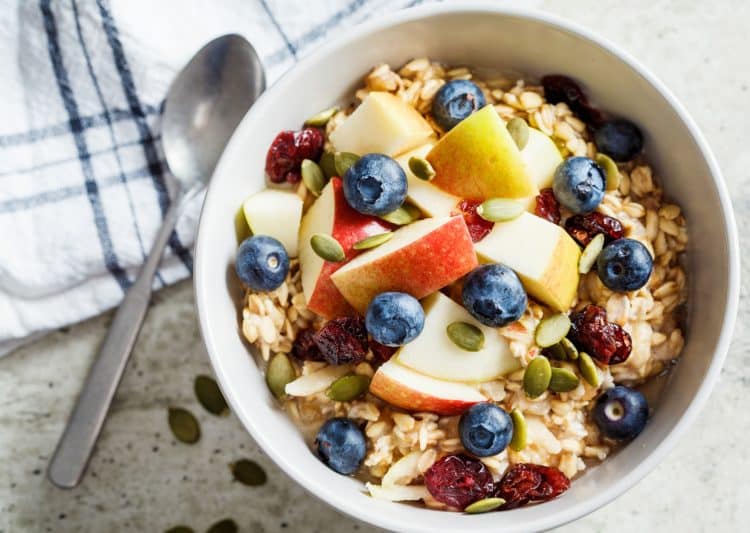Weight loss is undoubtedly the most common fitness objective. Let’s be honest; everyone can lose a few pounds.
A calorie deficit is the holy grail of weight loss. It involves expending more calories than you consume in a day.
However, the way most people approach weight loss dieting is flawed. They gravitate towards fancy diets that promise big results in a short period. Sadly, more often than not, these diets are nothing but fads that rely merely on cutting calories.
While these overly restrictive diets can help you shed a few pounds quickly, they increase the possibilities of nutrient deficiencies, rebound weight gain, constant hunger, and metabolic slowdown.
Starving yourself is not the solution. In fact, it only makes things worse. Besides always feeling hungry, eating way fewer calories than what your body needs can lead to an unhealthy relationship with food.
This is where nutrient density shines!
Level Up Your Fitness: Join our 💪 strong community in Fitness Volt Newsletter. Get daily inspiration, expert-backed workouts, nutrition tips, the latest in strength sports, and the support you need to reach your goals. Subscribe for free!
Nutrient density focuses on the quality of the food you eat rather than obsessing over the quantity. Nutrient-dense foods are packed with vitamins, minerals, fiber, and antioxidants. Some of the most nutrient-dense foods include leafy greens, colorful fruits, lean proteins, and whole grains.
In this article, I’ll take you over how you can eat more, feel satisfied, and yet lose weight naturally. The best thing about the approach is that the weight loss is sustainable, and you won’t regain the lost pounds as soon as you phase out of this diet.
Understanding Nutrient Density
The traditional ‘eat less, move more’ dieting approach can backfire if you’re not paying attention.
To put it simply, nutrient density basically means that there is a high quantity of beneficial nutrients, like vitamins, minerals, protein, and fiber, in a particular food compared to its total caloric content.
To be nutrient-dense, a food must provide a substantial amount of these good nutrients in relatively few calories.
But why is this important, you ask?
One of the best things about nutrient-dense foods is that they can keep you feeling full for longer. This can be incredibly helpful when you are trying to lose weight. Fiber and protein are the main nutrients responsible for this property.
You are more likely to snack on processed food when you are starving. Prolonged satiety makes you less likely to overeat. What happens when you’re eating healthy for an extended period? You lose weight and avoid any fluctuations.
Role of Nutrients in Satiety
Switching to a nutrient-dense diet is absolutely worth it if you were constantly hungry on your current calorie-restrictive diet. However, you must know about the foods that you must prioritize to get the best effects.
Protein
This is the most important nutrient, according to most experts, when it comes to feeling satiated. Protein is also the building block of muscles, helping you achieve a stronger and more aesthetically appealing physique. Lean meats, fish, eggs, and legumes are excellent sources of protein.
Fiber
It is found in vegetables, fruits, and whole grains. Fiber is responsible for adding bulk to your diet. It works by slowing down your digestion and can also help regulate your bowel movements.
Healthy fats
Many consider dietary facts as their arch-nemesis. However, this is a mistake. Unsaturated fats that are available in avocado, nuts, seeds, and olive oil can boost your feeling of fullness. They’re also important for absorbing essential vitamins.
Benefits of Nutrient-Dense Eating for Weight Loss
Switching to a nutrient-dense diet has the following advantages:
Enhanced Satiety
In my own experience, this is one of the biggest benefits of eating a nutrient-dense diet.
Whenever I have followed a restrictive diet, I have to constantly battle hunger pangs. Eating nutrient-dense foods during the cutting phase can help keep you feeling full even when you’re running a calorie deficit. (1)
I highly recommend avoiding the urge to snack on highly processed foods as they can lead to sugar spikes and crashes, which can lead to starvation and overeating.
Improved Metabolism
Metabolism is the process through which the body converts food into energy. Eating the right types of foods can help prime your digestion and turn your body into a fat-burning furnace. A good metabolic rate can also help you burn calories throughout the day, even when you are not physically active. (2)
Make the food listed in this article the primary source of nutrition in your diet to experience all these benefits firsthand.
Increased Energy Levels
A lack of energy is one of the most common side effects of a calorie-restrictive diet. This can make you feel sluggish and unmotivated. It is not uncommon for people to skip gym sessions and procrastinate other important work while following an intense diet.
Nutrient-dense foods work by releasing energy slowly and steadily, ensuring a constant supply of energy throughout the day. (3)
Switching to a nutrient-dense diet should be a no-brainer for people who work a physically intensive job that requires them to stay active throughout the day. This diet can also be a game changer for parents with young kids or those trying to take their fitness levels to the next level.
Reduced Cravings
Most overly restrictive diet involves eating a ton of salads. Honestly, eating too much greens can taste like sadness. To make things worse, following a fad diet for an extended period can lead to eating disorders, which can negatively affect your overall health and well-being.
Cravings during a diet are normal. However, how you tackle them will make all the difference. (4)
Nutrient-dense diets rich in protein and fiber keep you feeling full for longer, effectively minimizing carvings. Cravings, like energy levels and satiety, are influenced by your blood sugar levels.
Level Up Your Fitness: Join our 💪 strong community in Fitness Volt Newsletter. Get daily inspiration, expert-backed workouts, nutrition tips, the latest in strength sports, and the support you need to reach your goals. Subscribe for free!
I recommend avoiding junk and sugary food as they cause blood sugar spikes and crashes, which eventually leave you feeling hungry and craving more unhealthy food.
Better Overall Health
Weight fluctuations and changes are part and parcel of life. You can manage your weight by switching diets or exercising more. However, your overall health and well-being are the most important factors that affect your longevity.
Eating a balanced, nutrient-dense diet has far-reaching benefits. It can improve your digestion, reduce the risk of chronic diseases like heart disease and type 2 diabetes, and even enhance your mood.
Examples of Nutrient Dense Foods
Now that you know the basics of nutrient density and how it can impact your weight loss ambitions, here are the best food sources that should be a staple in your grocery list:
- Vegetables: Spinach, kale, broccoli, carrots, sweet potato
- Fruits: Blueberries, raspberries, strawberries, apples, bananas, oranges
- Protein: Salmon, chicken breast, lean beef, lentils, tofu
- Grains: Quinoa, brown rice, oats, whole-wheat bread
- Dairy: Greek yogurt, cottage cheese, low-fat milk
Recipe Ideas For Nutrient-Dense Meals
Have you ever wondered why so many people gravitate toward junk food? It tastes delicious.
You can win half the battle during a shredding program by making your healthy meals more exciting. Below is a sample meal plan that will feel as good as your favorite cheat meals:
Breakfast: Power Bowl
Combine Greek yogurt, berries, a handful of almonds, and honey in a bowl. Adjust the honey quantity to tantalize your taste buds. Eat scrambled egg whites on the side to ensure satiety.
Lunch: Chicken Salad
This meal should ideally be after your workout. It includes tossing together grilled chicken (or fish), various colorful veggies, and a light vinaigrette. Add some quinoa or brown rice to ensure optimal glycogen replenishment.
Dinner: Roasted Chicken
Another high-protein meal to ensure your body has enough building material to repair and rebuild muscle tissue. Roast a chicken with vegetables like sweet potatoes and carrots. Add your favorite herbs or spices to add to the flavor.
Practical Strategies for Incorporating Nutrient-Dense Foods
This is how you can make nutrient-dense meals a part of your routine:
Meal Planning and Preparation
Whether you are trying to gain or lose weight, you must proceed with a plan. Eating random meals throughout the day increases the chances of feasting on junk food.
This might take a little effort upfront, but it will pay dividends in the long term. I recommend planning and prepping a week’s worth of meals in a single go. Also, make arrangements for healthy snacks in your diet. This ensures you always have something healthy at hand whenever hunger pangs strike.
Smart Swaps
Switching to a healthy meal plan can feel intimidating. However, it doesn’t have to be this way.
Avoid making all the changes in the beginning. Start small and update more meals as you get a knack for the new diet. Begin by switching the sugary cereals with healthy alternatives like Greek yogurt with berries and nuts. Then, rethink your sides to ensure you’re achieving your daily micronutrient goals. The big meals should be adjusted in the end.
Mindful Eating
Many people tend to eat their meals in front of a screen. While they might do it under the garb of productivity, it can hamper their digestion and gut health.
Experts recommend engaging in mindful eating to make the most of your healthy meals. This approach includes slowing down and taking your time to eat your meals. Chew thoroughly and relish the flavors of your meal.
Pay close attention to your hunger and fullness cues. Stop eating when you’re satisfied. Eating mindlessly increases the risk of overeating.
Addressing Common Concerns and Misconceptions About Nutrient-Dense Foods
Nutrient-dense diets have their fair share of misconceptions. Here are the most common misconceptions you should be wary of:
Nutrient-Dense Foods Are Expensive
Consuming nutrient-dense foods doesn’t mean only eating organic produce, which can burn a hole in your pocket. Switching to nutrient-dense foods involves picking healthier alternatives that are easily available in the market.
I recommend buying in bulk and shopping for seasonal or frozen foods to save extra bucks.
Remember, eating low-quality foods might be cheap, but you’ll spend way much more on hospital bills in the long term.
I Don’t Have Time To Cook
Cooking healthy foods is not as cumbersome as some people have made it out to be. As explained earlier in this article, you must be willing to embrace meal prepping, and this diet will fit right into your lifestyle.
If you are someone who doesn’t like cooking, pick foods that are easy to make, such as eggs and veggies.
Healthy Foods Don’t Taste Good
This is one of the most common misconceptions that I come across on a daily basis.
Nutrient-dense meals can taste like anything you want. There are countless healthy, zero-calorie seasonings and spices on the market these days. Experiment with different products to transform dishes into something Gordon Ramsay would be proud of.
Conclusion
Low-calorie meals might help you achieve your weight loss objectives, but they can lead to unwanted side effects like low energy levels, nutrient deficiencies, constant hunger, and weight fluctuation.
On the other hand, eating nutrient-dense foods is one of the best ways to feel full while working toward shedding the spare tire and avoiding weight rebound.
Make the food sources listed in this article a staple in your grocery haul and experiment with the sample diet plan to ensure sustainable weight loss and optimal health. Stick to these dieting principles for at least eight to 12 weeks to get the best results.
If you have any questions about how you can replace your low-calorie meals with nutrient-dense foods, post them in the comments below, and I’ll be happy to help!
References:
- Njike, V. Y., Smith, T. M., Shuval, O., Shuval, K., Edshteyn, I., Kalantari, V., & Yaroch, A. L. (2016). Snack Food, Satiety, and Weight. Advances in nutrition (Bethesda, Md.), 7(5), 866–878. https://doi.org/10.3945/an.115.009340
- Nieuwenhuizen AG, van Schothorst EM. Energy Metabolism and Diet. Nutrients. 2021 Jun 1;13(6):1907. doi: 10.3390/nu13061907. PMID: 34206013; PMCID: PMC8230308.
- Bo S, Fadda M, Fedele D, Pellegrini M, Ghigo E, Pellegrini N. A Critical Review on the Role of Food and Nutrition in the Energy Balance. Nutrients. 2020 Apr 22;12(4):1161. doi: 10.3390/nu12041161. PMID: 32331288; PMCID: PMC7231187.
- Meule A. The Psychology of Food Cravings: the Role of Food Deprivation. Curr Nutr Rep. 2020 Sep;9(3):251-257. doi: 10.1007/s13668-020-00326-0. PMID: 32578025; PMCID: PMC7399671.

